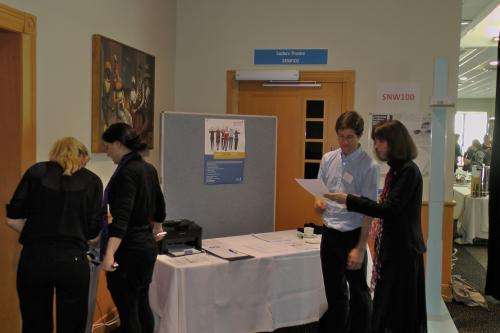Exploring body size in Maori and Pasifika women

Does your body size tell you anything about your health? Appearances can be deceiving.
A new study by Massey University researchers is exploring the profiles of hundreds of Māori and Pasifika women of all shapes and sizes, as well as European/Pākeha women.
Maori and Pacific Island women don't necessarily fit the confines indicated by BMI. A 2009 pilot study revealed that, on average, in a normal, healthy population of New Zealand European women (18-44yr olds), 21.4% had a normal BMI of 22.6 (1.37) kg/m2 and high body fat % of 33.7 (7.05)%, increased metabolic risk, and a higher sedentary lifestyle.
The study, dubbed EXPLORE (Examining the Predictors Linking Obesity-Related Elements) funded by the Nutricia Research Foundation from The Netherlands, is underway at Massey University's Albany campus. The researchers will profile nearly 700 women of Māori, Pasifika and New Zealand European/Pākeha ethnicity to investigate whether women with different body fat profiles also have different risk levels for chronic disease.
Associate Professor Rozanne Kruger from the Institute of Food, Nutrition and Human Health is the study's Principal Investigator. She says this research follows on from the 2009 pilot study, which investigated the variations in body fat percentage and body weight against the benchmark Body Mass Index, or BMI.
"Our previous research has shown that while some women appear to be lean, they are actually carrying hidden fat in their bodies which may put them at risk for developing chronic diseases. We would also like to find out what role diet, taste and physical activity patterns play in determining these body fat profiles."
Dr Kruger says finding out where fat is hidden could also help with the fight against obesity, and this study will follow up on new research regarding microRNA molecules, which are sensitive to diet and exercise.
"We would like to know where the hidden fat is situated, especially in younger women where the typical central fat deposition following menopause is absent," she says. "We are also keen to investigate the recently discovered microRNA molecules as potential biomarkers for metabolic diseases that can target genes to block protein regulation in selected tissues.
"These molecules are sensitive to diet and exercise and may influence the varied metabolic response and energy expenditure and storage seen in individuals."
To gain an accurate overview, the research team need to find a total of 675 women across 3 particular ethnic groups from across the Auckland region. They are seeking 225 Māori, 225 Pasifika and 225 New Zealand European women to take part. This means they'll need to screen more than a thousand women to find their study participants.
"That's a large sample to find, and we have a particular criteria for participants," she says.
The study comes at a time when obesity rates have increased over the past 15 years from 19 per cent in 1997 to 28 per cent in 2011/12. According to the Health of New Zealand Adults study, about one million New Zealand adults are now obese.
Dr Kruger hopes that Māori and Pasifika women will encourage each other to join in the study, and enable the availability of more accurate information about Polynesian body shapes and profiles. "Auckland is home to the world's largest Polynesian population. It's the perfect place for this study to take place, so we can work out more accurate risk profiles for chronic diseases," she says.
Prospective participants will first need to undergo a screening process to determine eligibility. Dr Kruger says the research team are happy to travel to marae and community venues to do the initial screening process.
Women accepted into the study will need to visit the Albany campus to have their blood pressure measured, and undergo a full body composition assessment (which will show body fat percentage and distribution) using the BODPOD and DXA. A blood sample will be taken, a taste perception test will be done, and questionnaires regarding diet and physical activity will need to be completed. An accelerometer (a small device similar to a step-counter worn around the waist) will also be used for a 7-day period to measure physical activity.
"It is well known that one obesity prevention message for a whole population has little impact on the obesity rates – one size does not fit all. By focusing on building profiles for body composition groups we will be able to create a strong foundation for future evidence-based practice guidelines," says Dr Kruger.















